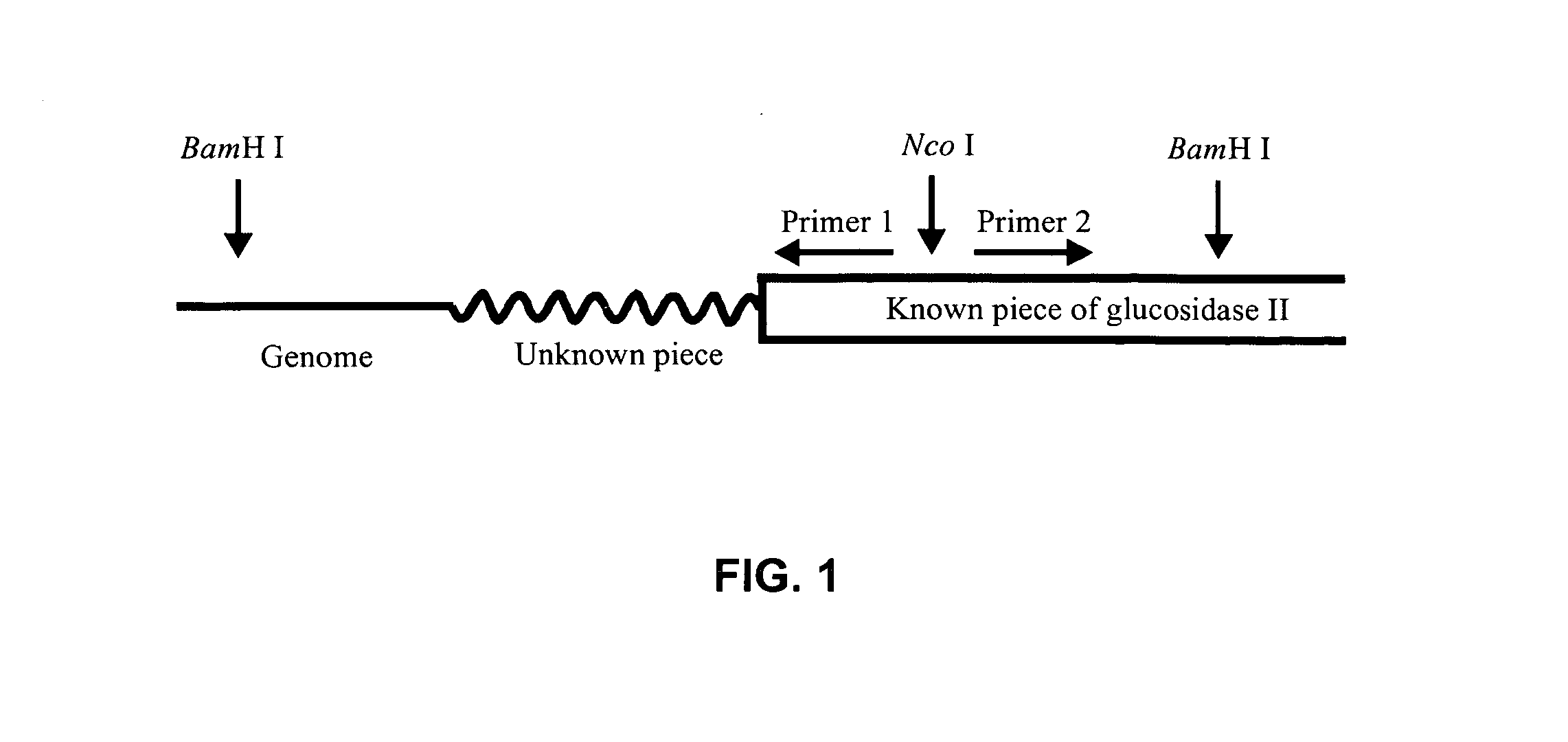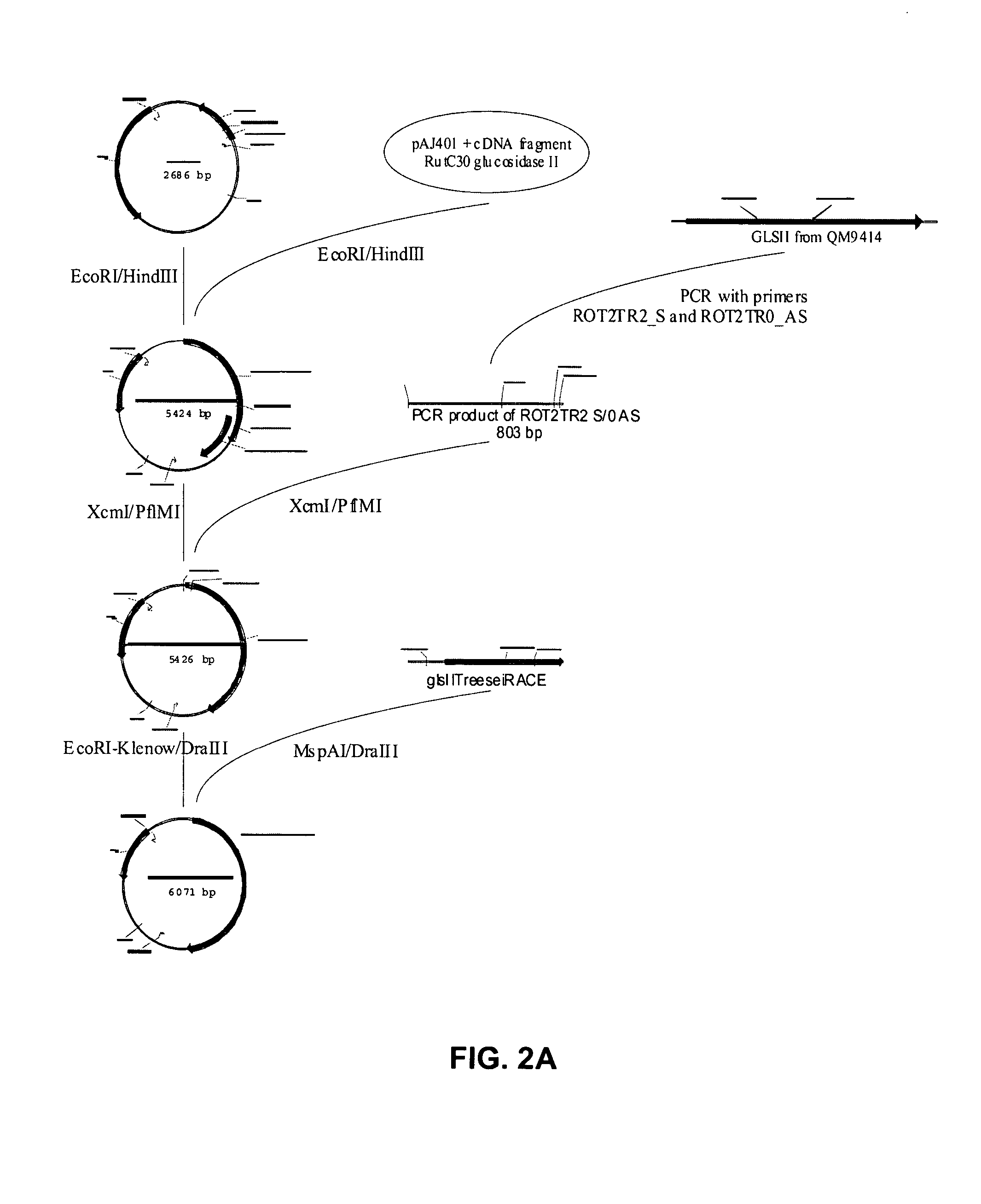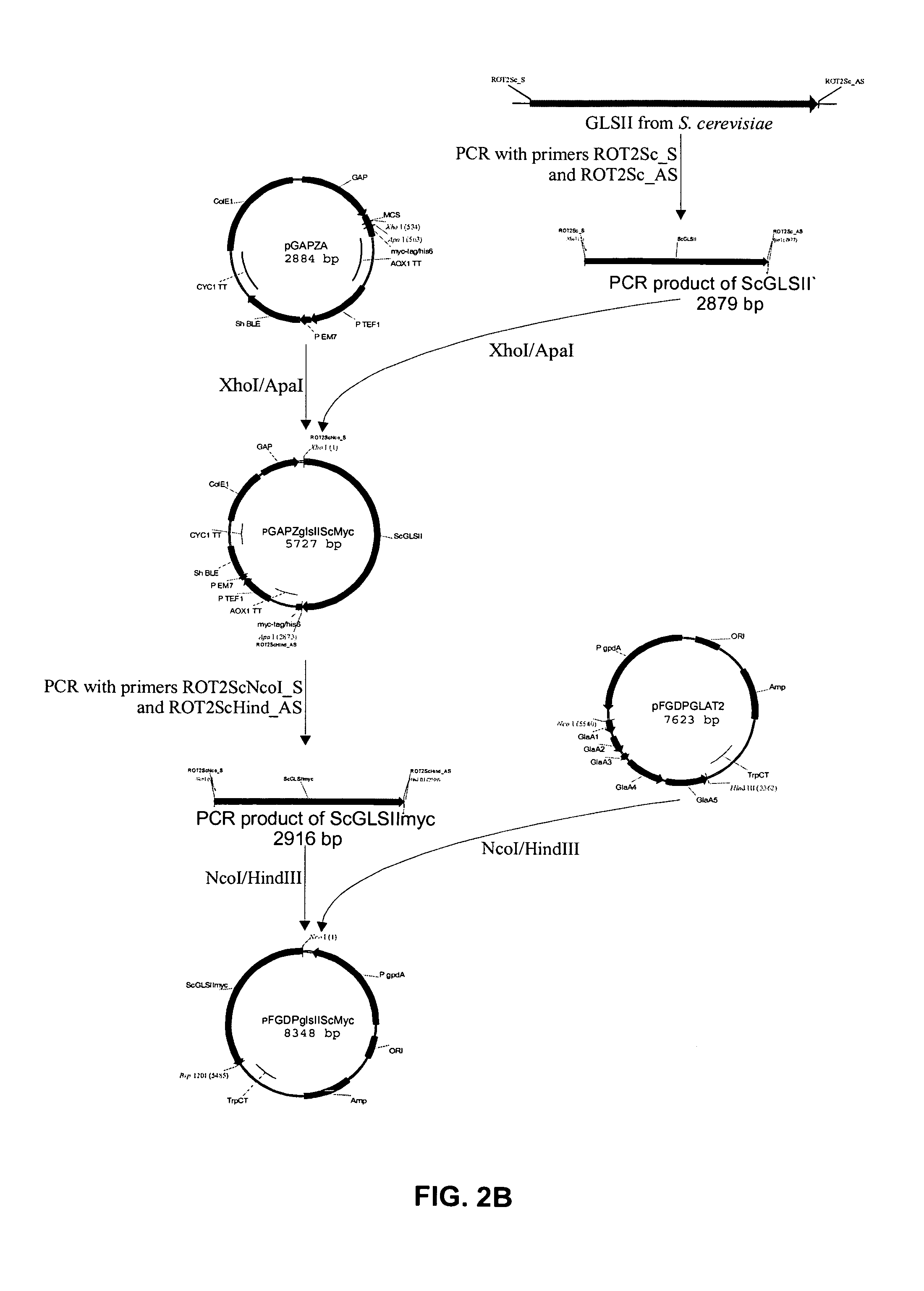Protein secretion in eukaryotic cells
a technology of eukaryotic cells and proteins, applied in the field of biotechnology, can solve the problems of reducing the therapeutic value of such glycoproteins, so as to increase the protein secretion in eukaryotic cells and reduce the activity of glucosidas
- Summary
- Abstract
- Description
- Claims
- Application Information
AI Technical Summary
Benefits of technology
Problems solved by technology
Method used
Image
Examples
example 1
Cloning of the T. reesei Glucosidase II Alpha Subunit Gene
cDNA Cloning of the Glucosidase II Alpha Subunit
[0126]Using the ClustalW algorithm website, an alignment was made between the amino acid sequences of the S. cerevisiae glucosidase II and the several known mammalian glucosidase II alpha subunits. Based on several homologous regions, three degenerate primers were designed to screen a cDNA library of the T Reesei Rut-C30 strain (VTT Biotechnology). Amplification using sense primer 1, antisense primer 3 and the cDNA library as template DNA, resulted into a fragment of the expected size of 1170 bp (FIG. 3, Panel A). Nested PCR amplification including antisense primer 2, resulted in an extra DNA fragment with an expected length of about 970 bp (FIG. 3, Panel B). Both fragments were cloned in the TOPO-TA vector pCR2.1-TOPO (Invitrogen) for sequence analysis. By homology search, the obtained nucleotide sequences proved to be glucosidase II specific.
[0127]Based on this knowledge, clon...
example 2
Expression of a Fully Active Trichoderma Glucosidase II Alpha Subunit in the Rut-C30 Strain
Construction of a Trichoderma Glucosidase II Alpha Subunit Expression Plasmid and Transformation to Rut-C30
[0133]A T. Reesei expression vector encoding a functional variant of the Rut-C30 glucosidase II alpha subunit was prepared. In a first step, the frame-shift within the cloned cDNA fragment was repaired. In a next step, the 5′ RACE fragment and the repaired cDNA were ligated to one another to obtain a full length ORF, encoding a full size and functional alpha subunit. In a last step, the ORF was placed under the transcriptional control of the constitutive gpdA promoter and the TrpC terminator resulting in the vector pFGPDglsIITreesei. Using a second strategy, a similar vector was created in which the ten C-terminal codons of the ORF were replaced by the coding sequence of the Myc-tag, resulting in vector pFGPDglsIITreeseiMyc.
[0134]Both plasmids were transformed to T. Reesei Rut-C30 as desc...
example 3
Expression of α-1,2-mannosidase in Trichoderma
[0142]In order to localize most of the recombinant α-1,2-mannosidase to the ER compartment, where it can act on the substrate Man8GlcNAc2 to deliver a Man5GlcNAc2 structure, an HDEL-tag was added at the C-terminal end of the protein. By doing so, the recombinant protein is recycled in a COP I depended manner from the Golgi apparatus to the ER due to binding to the HDEL-receptor.
[0143]An expression cassette containing the constitutive gpdA promoter, the prepro-signal sequence of the yeast α-mating factor for directing the protein into the secretory pathway, the HDEL-tagged α-1,2-mannosidase ORF and the trpC terminator was constructed. The construct was transformed using AmdS (acetamidase) as a selection marker. Transformants were selected for their ability to grow on minimal medium with acetamide as a sole nitrogen source. The transformants were submitted to several selection rounds in order to get single or “pure” clones.
[0144]To assess...
PUM
| Property | Measurement | Unit |
|---|---|---|
| pH | aaaaa | aaaaa |
| temperature | aaaaa | aaaaa |
| volume | aaaaa | aaaaa |
Abstract
Description
Claims
Application Information
 Login to View More
Login to View More - R&D
- Intellectual Property
- Life Sciences
- Materials
- Tech Scout
- Unparalleled Data Quality
- Higher Quality Content
- 60% Fewer Hallucinations
Browse by: Latest US Patents, China's latest patents, Technical Efficacy Thesaurus, Application Domain, Technology Topic, Popular Technical Reports.
© 2025 PatSnap. All rights reserved.Legal|Privacy policy|Modern Slavery Act Transparency Statement|Sitemap|About US| Contact US: help@patsnap.com



